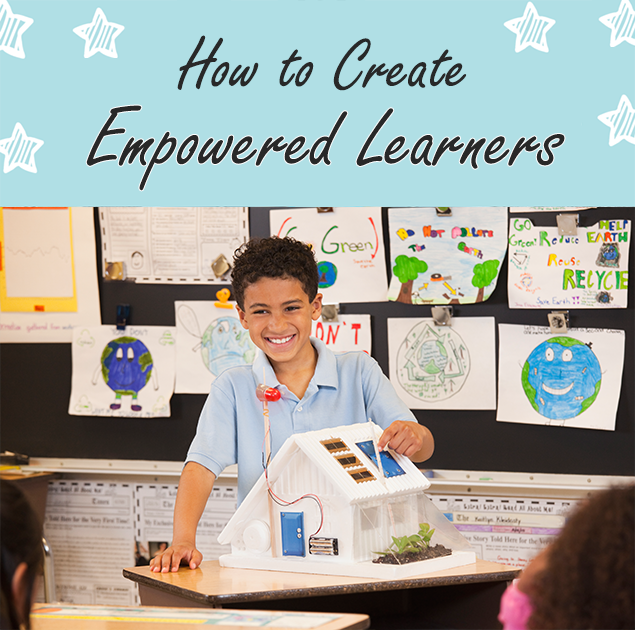Change the Classroom Dynamic with Empowered Learners
Posted by Network Support · Leave a Comment
Change the dynamic in the classroom by creating Empowered Learners. This concept will improve student engagement and create better learners.
How to Create Empowered Learners
Definition of an Empowered Learner
The term “empowerment” was defined by Fymeir, Shulman and Houser (1996) as “the process of creating intrinsic task motivation by providing an environment and tasks which increase one’s sense of self efficacy and energy.” Similarly an “empowered learner” is defined as “being motivated to perform tasks, and more specifically an empowered person finds the tasks meaningful, feels competent to perform them, and feels his/her efforts have an impact.”
Essentials of Learner Empowerment
A closer look at the definition will help us identify traits that contribute to Learner Empowerment. Here we will analyze these traits and see their influence on student learning:
- Meaning: Students need to be convinced of the value of a task before giving their efforts to it. They should be able to find some meaning and importance to performing the task in order to be motivated to complete and succeed in it. For example, a writing assignment is often seen as a chore, but if students were to find some practical value in writing that assignment, they would be more inclined to work on it.
- Competence: Empowered students will be confident in his/her abilities, and will perceive themselves as capable to complete the task. Students, who are often struggling with their work, are those who lack confidence and feel they are incompetent. Providing success oriented tasks initially, to instill students with a sense of confidence is extremely important before progressing to more challenging tasks.
- Impact: The knowledge that they can make a difference will motivate students to excel in their work. For example, creative strategies like community projects will promote student engagement and active learning while feeling a part of something bigger.
- Choice: When students feel they have a choice, they feel empowered. Providing them with opportunities to set their own goals or planning an action strategy will improve their desire to attain goals and in turn improve student learning in the classroom.
Tips for Creating Empowered Learners in the Classroom
Following are practical tips to help empower students:
- Understand students’ interests: At the start of the year, conduct a survey to find students’ interests. This will help structure topics in accordance with the students’ interests, in turn improving student motivation, engagement and learning. It also helps students to realize that the teacher values their thoughts and inputs.
- Scope for practical learning: Do not confine learning within the walls of the classroom or with material found only in textbooks. Increase the scope for practical learning and add real world examples, topics and issues to teach in the classroom. Linking the curriculum to practical, hands-on experiences facilitates learning.
- Consider students’ readiness levels:Prior to planning for any activity, consider if the students are ready and have the abilities to undertake such a task. As mentioned before, if students perceive the task as too hard or outside their range of abilities, they will not be motivated to perform.
- Provide choices: Use different strategies to provide students with choices while learning. For example create a “Learning Menu” for the week. Students can choosewhich activity they want to do that day.By the end of the week they will have completed every task, but on their own schedule.
Teachers can alter the classroom environment and culture in order to create Empowered Learners. This will enable better learning and a more effective classroom.





